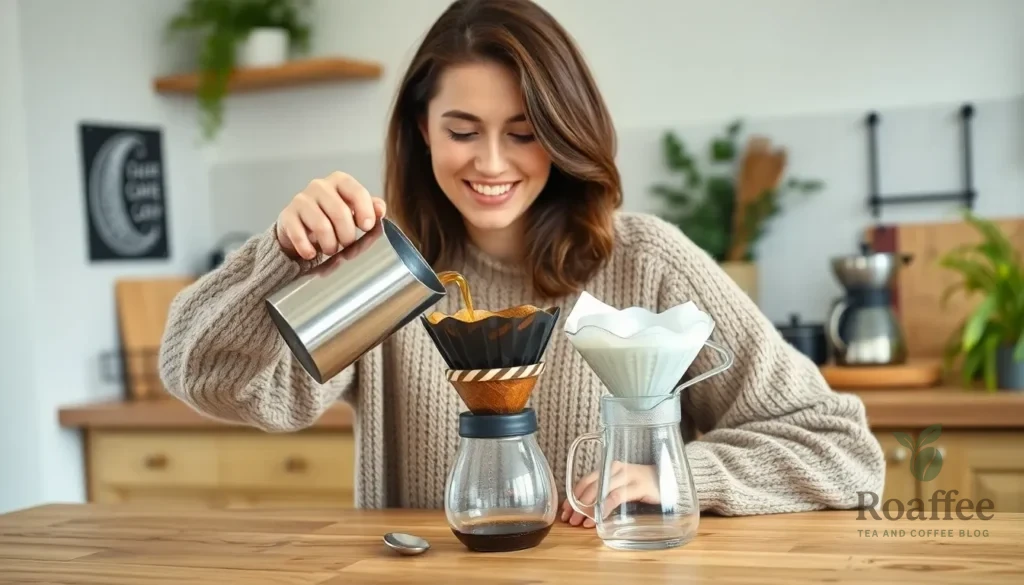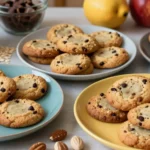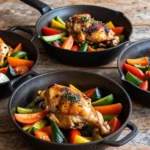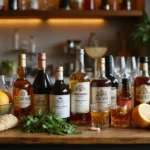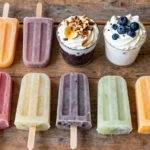We’ve all experienced that disappointing moment when our morning cup of coffee tastes flat, bitter, or just plain underwhelming. The good news? Transforming your daily brew from mediocre to magnificent doesn’t require expensive equipment or barista training. With a few simple adjustments to your coffee routine, you can unlock flavors you never knew existed in your favorite beans.
The secret lies in understanding the fundamentals – from water temperature and grind size to brewing time and bean freshness. These small but crucial details make the difference between a forgettable cup and one that truly energizes your morning ritual.
Whether you’re using a basic drip machine, French press, or pour-over setup, we’ll show you proven techniques that coffee enthusiasts swear by. Get ready to discover how minor tweaks can deliver major improvements in taste, aroma, and overall satisfaction with every sip.
Essential Coffee Brewing Equipment
The right equipment transforms average coffee beans into exceptional cups of coffee. We’ll explore the fundamental tools that make the biggest difference in your daily brew.
Coffee Grinder Options
Fresh grinding unlocks the full flavor potential of your coffee beans. We recommend investing in a quality grinder as your first equipment upgrade.
Burr grinders deliver consistent particle sizes that ensure even extraction. These grinders crush beans between two rotating plates rather than chopping them with blades. We find that consistent grind size eliminates the bitter and sour notes that plague many home brewers.
Blade grinders offer an affordable entry point for beginners. While they produce less consistent results than burr grinders, they still outperform pre-ground coffee significantly. We suggest pulsing the grinder in short bursts to achieve more uniform particle sizes.
Hand grinders provide excellent control over grind consistency without the noise of electric models. These manual options work perfectly for single servings and travel situations. We appreciate their ability to produce cafe-quality grinds at a fraction of the cost.
Brewing Methods and Tools
Different brewing methods extract unique flavor profiles from the same coffee beans. We’ll examine the most effective tools for home brewing.
Pour-over systems like the V60 or Chemex offer precise control over water flow and extraction time. These methods require gooseneck kettles for steady pouring and paper filters for clean cups. We find that pour-over brewing highlights the subtle notes in single-origin coffees.
French press brewing creates full-bodied coffee with rich oils and sediment. This immersion method requires coarse grinds and four-minute steeping times. We recommend metal mesh filters over paper to preserve the coffee’s natural oils and create deeper flavor profiles.
Espresso machines produce concentrated shots that serve as the foundation for cappuccinos and lattes. These machines require fine grinds and precise pressure control. We suggest starting with semi-automatic machines that offer manual control over shot timing.
Cold brew systems extract smooth, low-acid coffee concentrate over extended periods. These setups use coarse grinds and room-temperature water for 12 to 24 hours. We find that cold brew methods reduce bitterness while maintaining caffeine content.
Water Quality Testing
Water quality directly impacts your coffee’s final taste since it comprises 98% of your finished cup. We recommend testing and treating your water to achieve optimal brewing conditions.
TDS meters measure total dissolved solids in your water supply. Ideal brewing water contains 150-300 parts per million of dissolved minerals. We find that water below 75 ppm tastes flat while water above 300 ppm creates muddy flavors.
pH testing strips help identify water acidity levels that affect extraction rates. Coffee brewing works best with water pH between 6.5 and 7.5. We suggest using pH strips monthly to monitor your water supply’s stability.
Water filters remove chlorine, sediment, and excess minerals that interfere with coffee extraction. Carbon filters eliminate chlorine taste while reverse osmosis systems provide complete mineral control. We recommend replacing filters according to manufacturer specifications to maintain consistent water quality.
Mineral additives restore essential brewing minerals to filtered or distilled water. Third Wave Water and similar products provide precise mineral profiles for optimal extraction. We find that these additives create noticeably cleaner and more vibrant coffee flavors.
Selecting the Right Coffee Beans
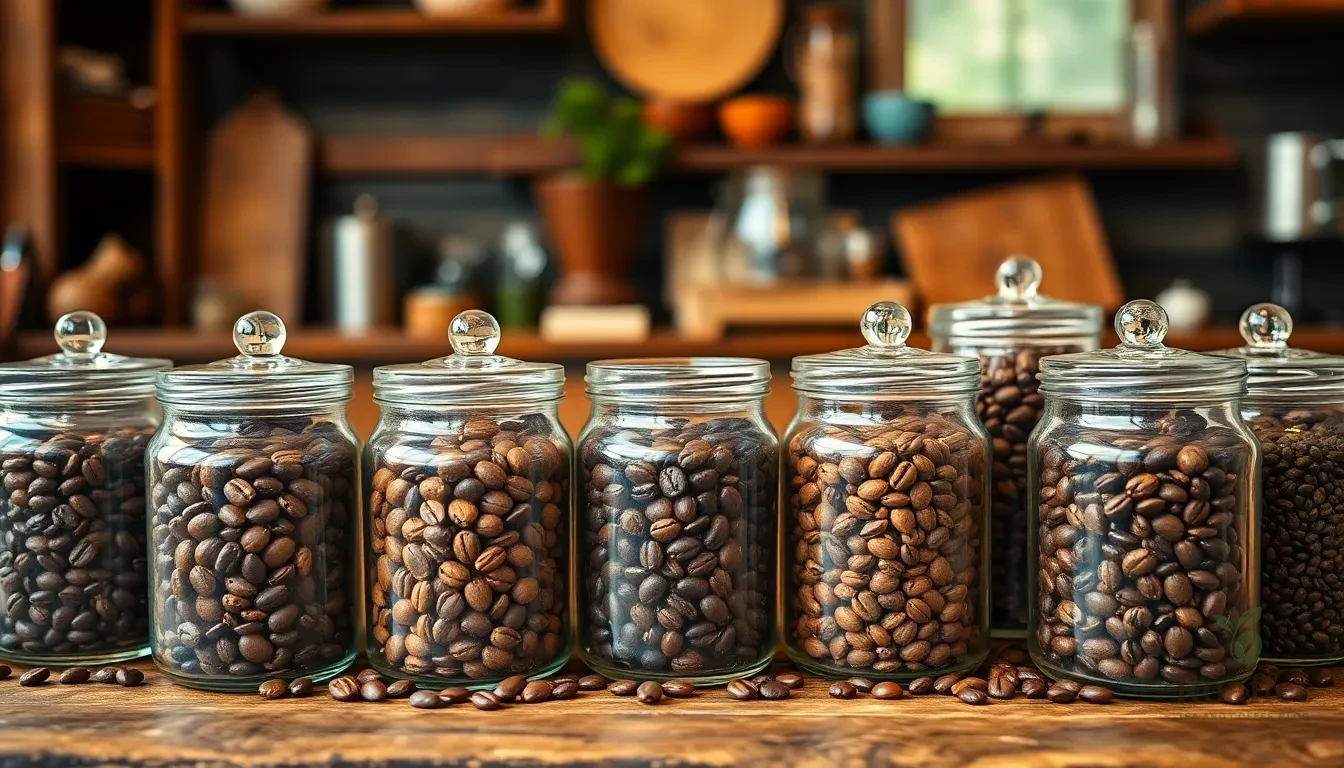
The foundation of exceptional coffee begins with choosing the right beans for your brewing method and taste preferences. Understanding the different types of coffee beans and their processing methods will help you make informed decisions that elevate your coffee experience.
Understanding Coffee Bean Types
We can categorize coffee beans into four main processing types that dramatically affect flavor profiles. Each processing method creates distinct taste characteristics that appeal to different palates.
| Processing Method | Flavor Profile | Characteristics |
|---|---|---|
| Washed | Clean and crisp | Bright acidity, minimal fruit notes |
| Natural | Juicy and syrupy | Heavy fruit flavors, full body |
| Wet-hulled | Chocolatey and nutty | Earthy undertones, medium body |
| Honey processed | Acidic and juicy | Balanced sweetness, complex notes |
Roast levels also play a crucial role in determining your coffee’s final taste. Light roasts preserve the bean’s original characteristics and deliver bright, fruity flavors with pronounced acidity. Medium roasts create a balanced cup with chocolate and nutty notes that appeal to most coffee drinkers. Dark roasts produce more bitter and robust flavors with reduced acidity and increased body.
Freshness and Roast Dates
We recommend purchasing coffee beans from sealed bags that clearly display recent roast dates to ensure optimal flavor. Beans exposed to air or sunlight in grocery store barrels degrade quickly and lose their essential oils and aromatic compounds.
Target beans roasted within the past few weeks for the best flavor extraction. Fresh beans will exhibit their intended flavor profile more accurately and provide better crema formation for espresso brewing methods. Stale beans often taste flat and lack the complexity that makes specialty coffee enjoyable.
Storage Tips for Maximum Flavor
Proper storage techniques can extend your coffee beans’ freshness up to 10-14 months when done correctly. We suggest storing beans in airtight, opaque containers that protect them from the four main enemies of coffee freshness: heat, moisture, light, and air.
Keep your coffee containers in a cool, dry place away from direct sunlight and heat sources like stoves or sunny countertops. Avoid storing beans in the refrigerator or freezer as temperature fluctuations can cause condensation that degrades flavor quality. Glass jars with tight-fitting lids or vacuum-sealed containers work best for maintaining the beans’ natural oils and preventing oxidation.
Perfecting Your Coffee-to-Water Ratio
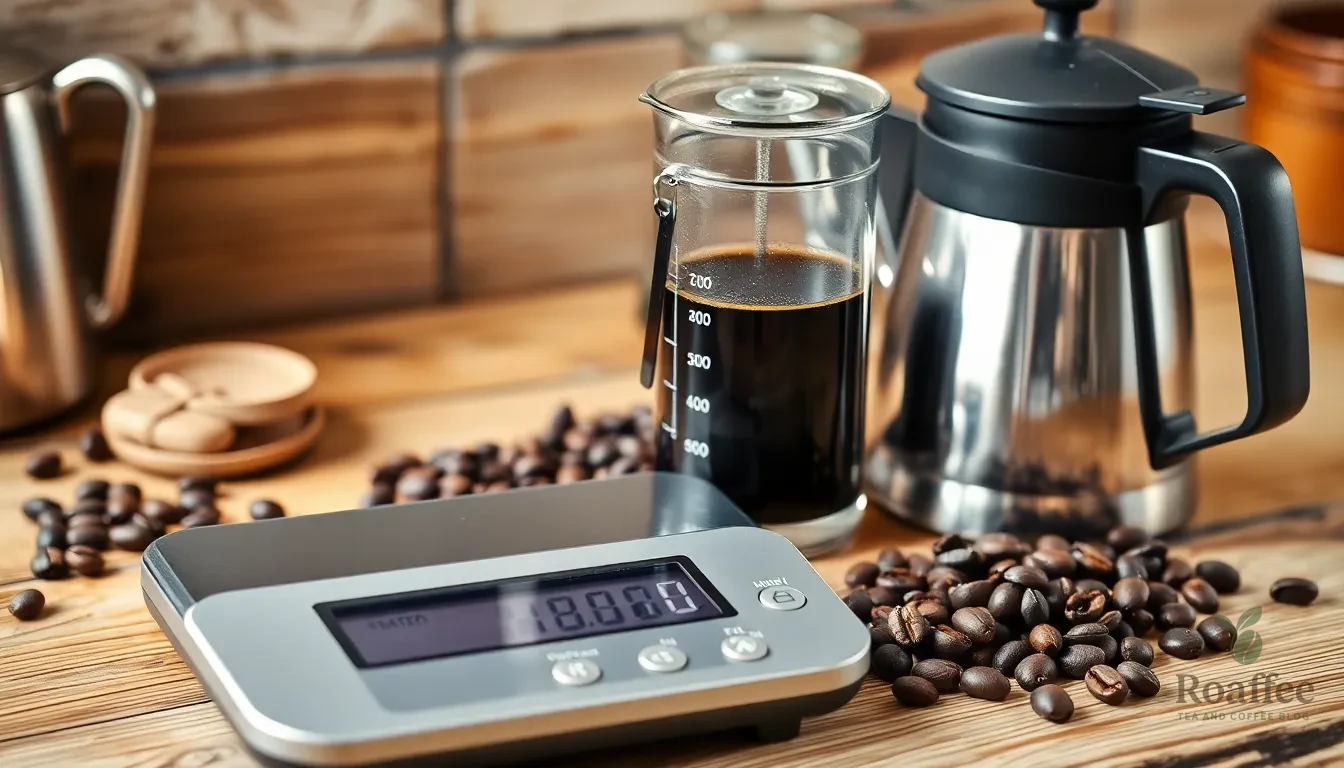
Getting the coffee-to-water ratio right forms the foundation of exceptional coffee flavor. We can dramatically improve taste by understanding how different ratios affect extraction and adjusting them to match our brewing method.
Standard Ratios for Different Brewing Methods
The golden standard for coffee brewing starts with a 1:16 ratio – one part coffee to 16 parts water by weight. For example, 20 grams of coffee pairs perfectly with 320 grams of water to create a balanced cup.
Drip coffee methods work best with ratios between 1:16 and 1:18, allowing us to fine-tune strength based on our bean choice and grind size. We recommend using a digital scale to weigh both coffee and water rather than relying on volume measurements since bean density varies significantly between different origins and roasts.
| Brewing Method | Ideal Ratio Range | Example Measurement |
|---|---|---|
| Drip Coffee | 1:16 to 1:18 | 25g coffee : 400-450g water |
| Standard Brewing | 1:16 | 20g coffee : 320g water |
French press, espresso, and other specialized brewing methods require different ratios that we adjust based on extraction time and brewing pressure. These methods typically use stronger ratios to compensate for their unique brewing characteristics.
Adjusting for Personal Taste Preferences
Weak coffee signals under-extraction, often caused by using too much water or grinding beans too coarsely. We can strengthen the flavor by increasing our coffee amount or reducing water volume while maintaining the same brewing time.
Bitter or overly strong coffee indicates over-extraction, which happens when we use too much coffee or grind too finely. Reducing coffee quantity or increasing water volume helps balance these harsh flavors and creates a smoother cup.
Grind size plays a crucial role in our ratio adjustments. Coarser grinds require slightly more coffee to achieve proper extraction, while finer grinds extract more efficiently and may need less coffee. We should start with the standard 1:16 ratio and make small adjustments based on taste results.
Using filtered, cold water enhances flavor clarity and ensures consistent extraction across different brewing sessions. Clean equipment prevents residual oils from affecting our carefully calculated ratios, allowing the true coffee flavors to shine through.
Water Temperature and Quality
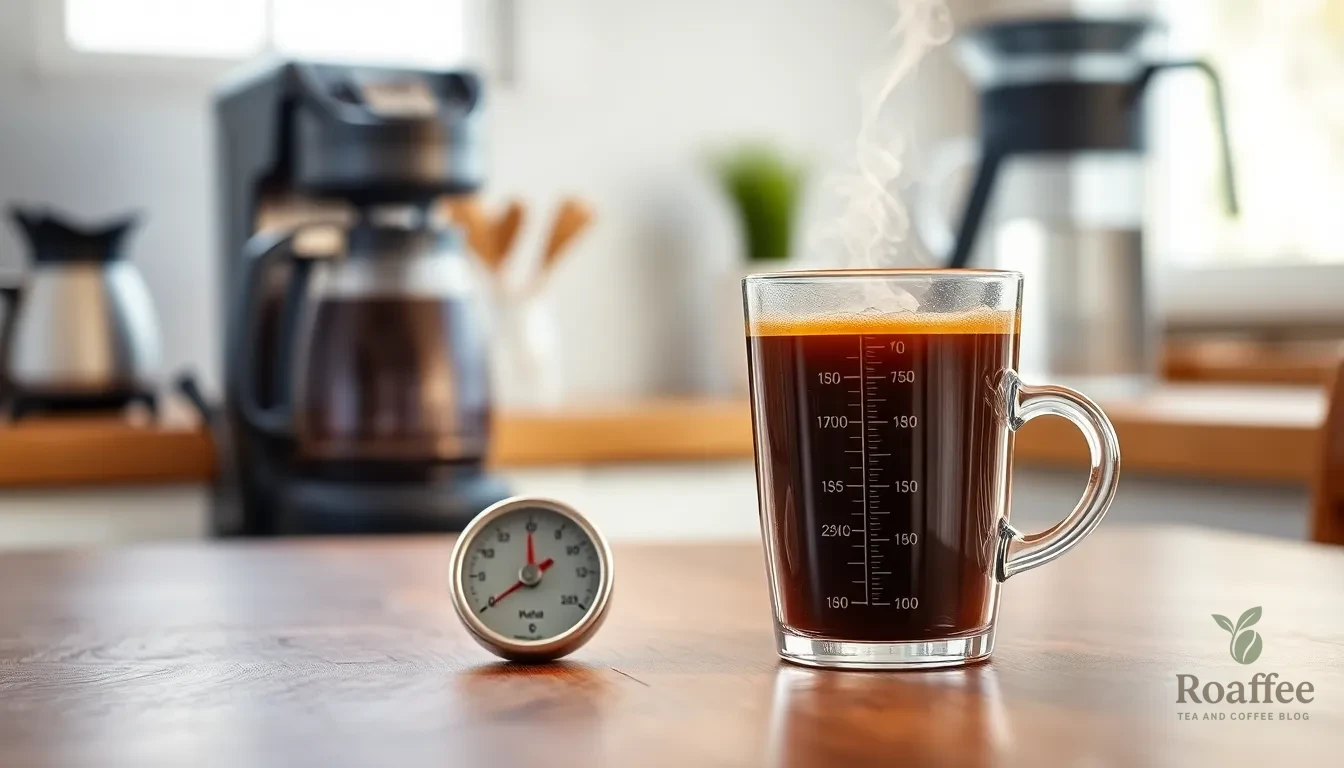
The foundation of exceptional coffee extends beyond beans and grind size to two critical factors that dramatically impact flavor extraction. Water temperature and quality work together to unlock the full potential of your coffee grounds.
Optimal Brewing Temperature
We recommend maintaining water temperature between 195°F and 205°F (90°C to 96°C) for optimal flavor extraction. This temperature range allows water to extract the perfect balance of flavors, oils, and caffeine from your coffee grounds without compromising taste.
| Temperature Range | Extraction Result | Flavor Profile |
|---|---|---|
| Below 195°F | Under-extraction | Weak, sour, flat coffee |
| 195°F – 205°F | Optimal extraction | Balanced, complex flavors |
| Above 205°F | Over-extraction | Bitter, burnt taste |
Boiling water reaches 212°F, which exceeds our recommended range. We suggest letting boiling water cool slightly before brewing to achieve the ideal temperature window. Water temperatures above 205°F risk releasing harsh compounds that create bitter, burnt flavors through over-extraction.
Water Quality and Filtration
Filtered water significantly enhances coffee flavor by removing chlorine and other impurities commonly found in tap water. These contaminants can impart off-flavors that mask the delicate volatile aroma and flavor compounds of your coffee.
Clean water ensures better preservation and extraction of your coffee’s natural characteristics during brewing. We recommend using filtered water consistently to maintain flavor clarity and allow the true coffee profile to shine through each cup.
Temperature Control Techniques
Preheating your brewing equipment prevents heat loss during the brewing process. French press vessels, pour-over cones, and other brewing tools should be warmed before adding coffee grounds and water.
Using a thermometer helps monitor and maintain water within the 195-205°F window throughout brewing. This tool eliminates guesswork and ensures consistent temperature control for repeatable results.
We advise against using boiling water straight from the kettle to prevent over-extraction and unwanted bitterness. Some professionals advocate using water as close to boiling as possible to maximize extraction efficiency, but maintaining the final water temperature within our recommended range remains crucial for optimal flavor development.
Mastering the Grind Size

The particle size of your coffee grounds directly influences how water extracts flavors during brewing. Getting this fundamental aspect right transforms your coffee from mediocre to exceptional.
Grind Size for Different Brewing Methods
Different brewing methods require exact grind sizes to achieve optimal extraction. Here’s how we match grind size to brewing method:
French Press uses immersion brewing with a long extraction time of approximately 4 minutes. Coarse grounds work best for this method to prevent over-extraction and bitterness. The larger particles allow water to flow freely while steeping.
Pour Over methods require medium-fine grounds since water passes through the coffee bed relatively quickly. This grind size balances extraction time with flavor development. The consistent particle size ensures even water flow through the brewing cone.
Espresso demands very fine grounds due to the short pressurized brewing time. The fine particles maximize surface area contact with water during the brief extraction period. This grind size creates the resistance needed for proper espresso pressure.
Cold Brew uses very coarse grounds for extended steeping times to avoid bitterness. The long extraction period of 12-24 hours requires larger particles to prevent over-extraction. Coarse grounds also make filtering easier after steeping.
| Brewing Method | Grind Size | Extraction Time | Reason |
|---|---|---|---|
| French Press | Coarse | 4 minutes | Prevents over-extraction |
| Pour Over | Medium-fine | 2-4 minutes | Balances extraction speed |
| Espresso | Very fine | 25-30 seconds | Maximizes surface area |
| Cold Brew | Very coarse | 12-24 hours | Prevents bitterness |
Consistency and Timing
Consistent grind size ensures even extraction across all coffee particles. Burr grinders produce more uniform particle sizes compared to blade grinders, which create irregular chunks and powder. This consistency prevents harsh or weak flavors that result from uneven extraction.
Timing your grind matters significantly for flavor preservation. We recommend grinding coffee immediately before brewing to preserve freshness and aromatic compounds. These delicate flavor elements diminish quickly after grinding, losing their complexity within minutes of exposure to air.
Accurate measurement improves brewing consistency. Using a kitchen scale to measure coffee by weight rather than volume ensures precise dosing regardless of bean size or density. This approach eliminates variables that can affect your coffee’s strength and flavor profile.
Pre-ground coffee loses its peak flavor within 15-30 minutes after grinding. The increased surface area exposed to air accelerates oxidation and volatile compound loss. Fresh grinding preserves the oils and aromatics that create coffee’s complex flavor profile.
Step-by-Step Brewing Instructions
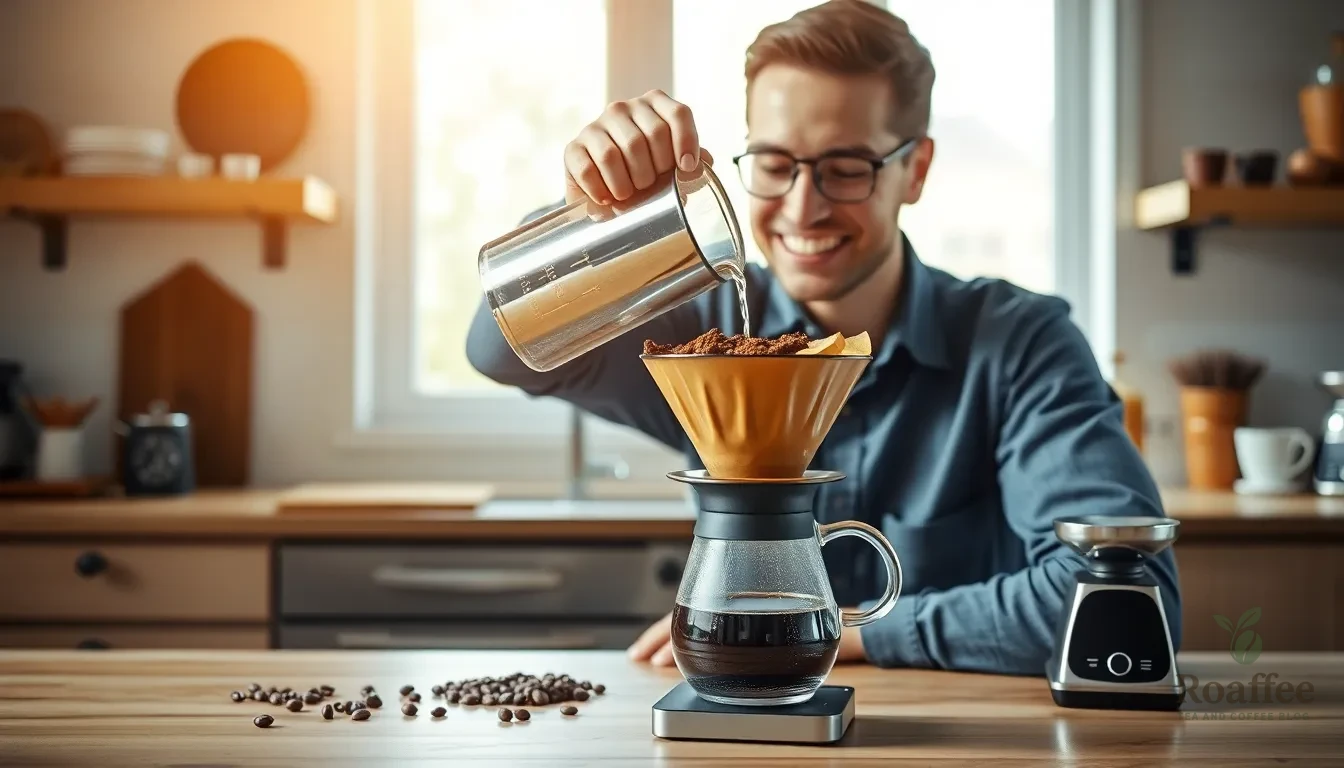
Now that we have covered the fundamentals of beans, water, and equipment, let’s walk through the precise brewing process that transforms these elements into exceptional coffee. Following these detailed steps will ensure consistent and flavorful results every time.
Preparation Phase
Fresh Bean Selection and Grinding
We start with freshly roasted coffee beans that show a clear roast date within the past two weeks. Grinding beans just before brewing preserves the volatile compounds that create optimal flavor and aroma. The grind size must match our chosen brewing method to achieve proper extraction rates.
Equipment Cleaning and Setup
All brewing equipment requires thorough cleaning to prevent off-flavors from previous brews. We rinse filters, brewing vessels, and grinders with hot water to remove any residual oils or particles. Clean equipment ensures that nothing interferes with the coffee’s natural flavors.
Water Preparation
We use filtered water heated to the optimal temperature range of 195°F to 205°F. A thermometer helps us maintain this precise temperature range, which extracts coffee flavors without introducing bitterness. Water quality directly impacts the final taste, so we avoid tap water that contains chlorine or other impurities.
Brewing Process
Measuring and Dosing
We measure coffee and water using a digital scale for accuracy, maintaining our established coffee-to-water ratio of 1:15 to 1:17 by weight. This precision ensures consistent extraction and flavor balance in every cup. Proper dosing forms the foundation of excellent coffee brewing.
Initial Water Contact
We begin by pouring a small amount of hot water over the coffee grounds to initiate the blooming process. This initial contact allows trapped carbon dioxide to escape, creating space for proper water penetration and extraction. The blooming phase prepares the grounds for even saturation.
Controlled Water Application
Water flows over the grounds in a slow, circular motion, avoiding the edges of filters to maintain even extraction. We pour steadily and consistently, ensuring all grounds receive equal contact with hot water. This technique prevents channeling and promotes uniform flavor extraction.
Timing and Technique
Blooming Duration
We allow the coffee to bloom for 30 to 45 seconds after the initial water contact. During this time, the grounds release gases and expand, creating optimal conditions for flavor extraction. Proper blooming enhances the coffee’s complexity and depth.
Method-Exact Timing
Brewing times vary according to our chosen method and desired strength. We follow these precise timing guidelines for optimal results:
| Method | Brewing Time | Extraction Type |
|---|---|---|
| French Press | 4-5 minutes | Full immersion |
| Pour-over | 3-4 minutes | Slow, even pouring |
| AeroPress | 20-40 seconds | Steeping plus pressing |
| Espresso | 25-30 seconds | High pressure extraction |
| Cold Brew | 12-24 hours | Extended steeping |
Extraction Monitoring
We observe the coffee’s color and flow rate throughout the brewing process to ensure proper extraction. The liquid should flow steadily without rushing or stalling, indicating balanced grind size and technique. Visual cues help us adjust our method for optimal flavor development.
Final Technique Adjustments
Temperature control remains crucial throughout the entire brewing process. We maintain consistent water temperature and adjust pouring speed based on the coffee’s response. These final refinements ensure that every variable contributes to the perfect cup.
Advanced Flavor Enhancement Techniques
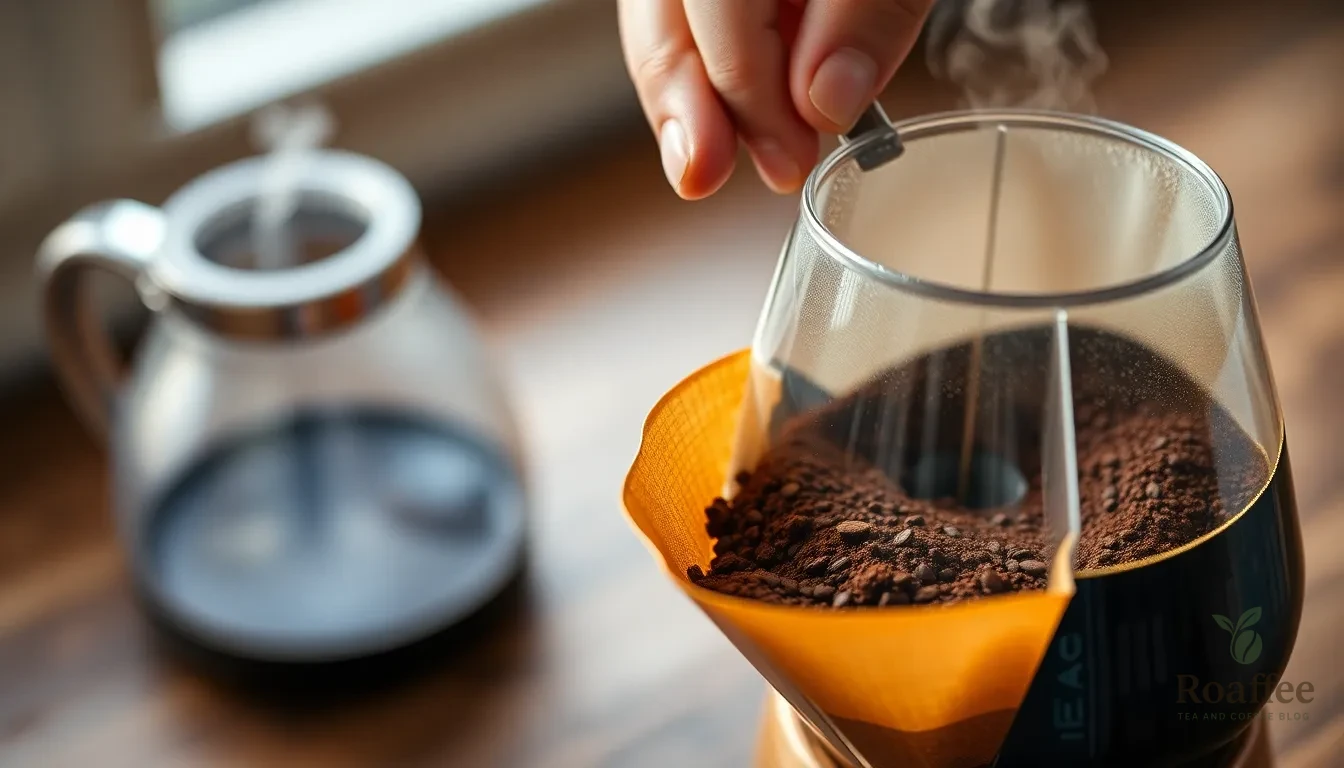
Building on the fundamental brewing principles we’ve covered, these advanced techniques will help us extract even more nuanced flavors from our coffee beans. These methods focus on precise control over the extraction process to unlock complex taste profiles that elevate our daily cup.
Bloom Time and Pre-Infusion
The blooming process creates the foundation for exceptional flavor extraction by releasing trapped carbon dioxide from fresh coffee grounds. We begin by pouring hot water at 195-205°F over our grounds, allowing them to bloom for 30-45 seconds. This initial wetting prepares the grounds for even extraction throughout the brewing process.
Fresh coffee beans produce a vigorous bloom that resembles a small volcano as gas escapes, while stale beans show minimal activity and deliver lackluster flavor. We observe this natural reaction to gauge our beans’ freshness and adjust our technique accordingly. The bloom time varies based on roast level, with lighter roasts typically requiring slightly longer blooming periods.
During pre-infusion, we use just enough water to saturate the grounds completely without creating a full slurry. This controlled approach ensures that all grounds receive equal exposure to water, setting the stage for balanced extraction. The blooming phase becomes particularly crucial when using pour-over methods where we have complete control over water application.
Stirring and Agitation Methods
Gentle agitation during the bloom enhances flavor by promoting uniform saturation across all coffee grounds. We stir or swirl the coffee bed lightly during the initial 30-45 second bloom period, ensuring even gas release and consistent water contact. This technique prevents dry pockets from forming in the coffee bed.
The stirring motion should be gentle and deliberate, using a spoon or stirring paddle to create small circular movements. We avoid aggressive mixing that could over-extract the grounds or create uneven particle distribution. Light agitation helps break up any clumps that form when water first contacts the grounds.
Swirling the brewing vessel provides another effective agitation method, particularly useful for methods like Chemex or V60. This motion distributes water evenly without disturbing the coffee bed’s structure. We perform this swirling motion 2-3 times during the bloom phase to maximize flavor extraction uniformity.
Temperature Stepping
Precise temperature control throughout the brewing process allows us to highlight different flavor compounds and reduce unwanted bitterness. We maintain water temperature between 195°F and 205°F as our baseline, then make subtle adjustments based on desired flavor outcomes. Lower temperatures within this range emphasize bright, acidic notes while higher temperatures extract more body and sweetness.
Temperature stepping involves gradually adjusting water temperature during different phases of brewing. We might start with water at 200°F for the initial bloom, then increase to 205°F for the main pour to extract deeper flavors. This technique works particularly well with complex single-origin coffees that have multiple flavor layers.
Different coffee origins and processing methods respond uniquely to temperature variations. Ethiopian coffees often benefit from lower temperatures that preserve their delicate floral notes, while Brazilian coffees handle higher temperatures that bring out chocolate and nut flavors. We experiment with 3-5 degree temperature adjustments to find the optimal range for each coffee type.
Using a reliable thermometer ensures consistent temperature control, while preheating our brewing equipment prevents unwanted temperature drops during extraction. We pour water in a steady, controlled manner to maintain temperature stability throughout the brewing process.
Troubleshooting Common Coffee Problems
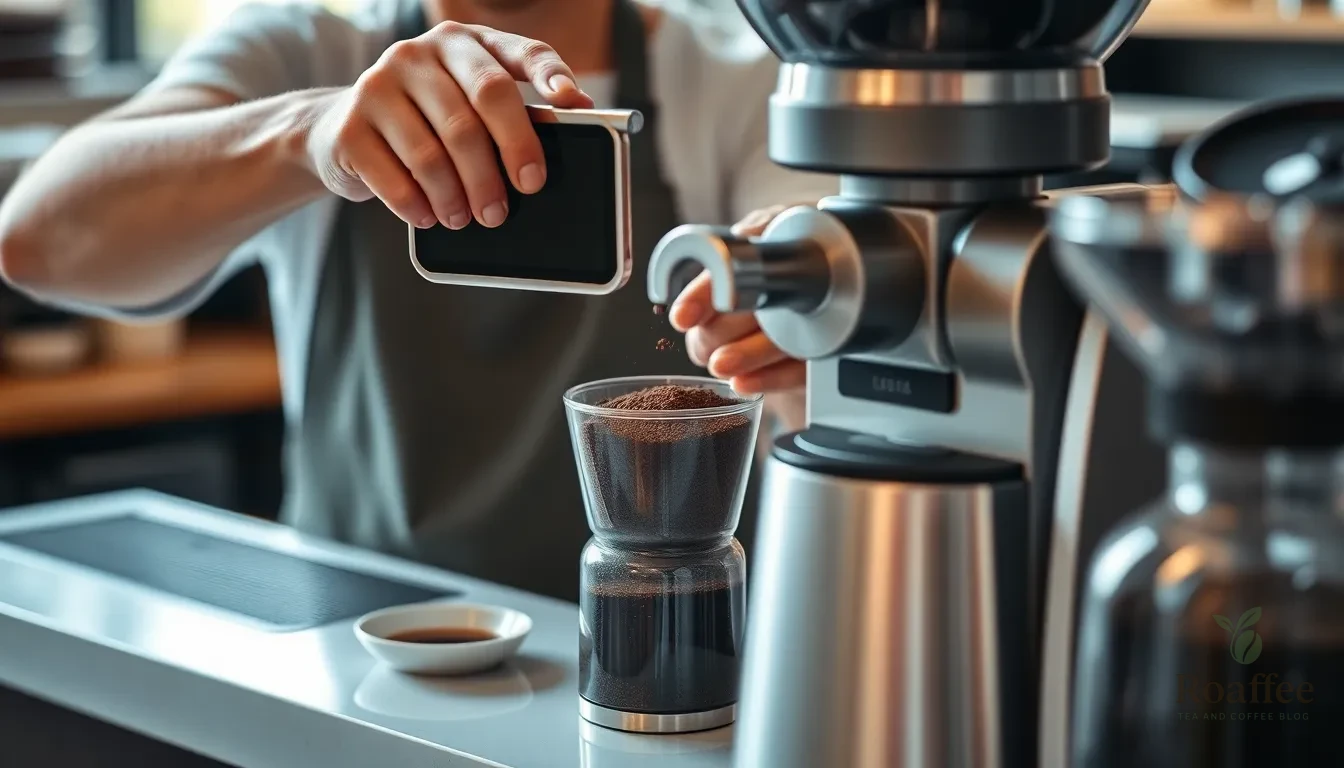
Even with proper technique, we sometimes encounter coffee that doesn’t taste quite right. Understanding the most common brewing issues helps us quickly identify and fix problems that can turn our perfect cup into a disappointing experience.
Bitter Coffee Answers
Over-extraction creates the harsh, unpleasant taste we associate with bitter coffee. This occurs when our grind is too fine, brewing time extends too long, or water temperature exceeds 205°F.
We can eliminate bitterness by using a coarser grind that reduces the surface area exposed to water. Shortening our brew time prevents excessive extraction of bitter compounds from the coffee grounds. Maintaining water temperature between 195°F and 205°F ensures optimal extraction without pulling harsh flavors.
Fresh, high-quality beans make a important difference in preventing bitterness. Regular cleaning of our equipment removes residue buildup that adds unwanted bitter notes to our coffee. Adding a pinch of salt to coffee grounds before brewing neutralizes bitterness by reducing perceived acidity.
Weak or Sour Coffee Fixes
Under-extraction typically causes weak or sour coffee flavors that lack the depth and richness we expect. This happens when our grind is too coarse, brewing time is too short, or we use insufficient coffee relative to water.
Using a finer grind increases the surface area available for extraction, allowing more flavor compounds to dissolve into our brew. Extending brewing time to 3-4 minutes for pour-over methods or around 4 minutes for French press ensures adequate extraction.
Increasing our coffee dose to approximately a 1:16 coffee-to-water ratio strengthens the final cup without overwhelming the palate. Water temperature must stay within the ideal range of 195°F-205°F to properly extract the flavorful compounds we want in our coffee.
Uneven Extraction Issues
Uneven extraction occurs when coffee grounds vary in size or when our brewing method allows water to bypass some grounds entirely. This creates inconsistent flavors where some parts of our coffee taste over-extracted while others remain under-extracted.
High-quality burr grinders produce consistent grind sizes that ensure uniform extraction across all coffee particles. Properly stirring or wetting coffee grounds in pour-over methods prevents dry pockets that can lead to uneven brewing.
Consistent tamping pressure for espresso methods ensures water flows evenly through the coffee bed. Measuring coffee by weight rather than volume provides precision since bean size and density vary significantly between different origins and roasts.
Make-Ahead Tips and Storage

Planning ahead transforms our coffee routine from rushed mornings to consistently excellent brews. Strategic preparation and proper storage techniques ensure we maintain peak flavor while saving valuable time.
Preparing Coffee Components
We recommend weighing our coffee beans using a kitchen scale rather than measuring by volume since bean density varies significantly between roasts and origins. Fresh whole bean coffee delivers optimal flavor when we grind just before brewing, as coffee beans lose up to 70% of their aromatic compounds within 8 days of roasting due to degassing.
Our coffee storage requires airtight containers placed in cool, dark locations away from heat sources and direct sunlight. We avoid refrigeration completely since moisture and odors degrade flavor quality and introduce unwanted tastes into our beans.
Spice preparation enhances our coffee’s complexity when we add measured amounts of cinnamon, salt, or citrus zest directly to the grounds before brewing. These additions reduce bitterness and create depth without overwhelming the coffee’s natural characteristics.
Storing Brewed Coffee
Brewed coffee reaches peak flavor immediately after brewing and should be consumed fresh whenever possible. We transfer any leftover coffee to thermal carafes to maintain temperature and minimize flavor degradation from oxidation.
Refrigerating brewed coffee accelerates flavor loss and creates unpleasant acidic notes that mask the coffee’s original taste profile. Room temperature storage in insulated containers preserves more flavor compounds than cold storage methods.
Batch Brewing Strategies
Large batch brewing requires proportional adjustments to our spice additions and flavor enhancers to maintain consistent taste across multiple cups. We scale our measurements based on the total coffee volume while keeping the coffee to water ratio constant.
Equipment cleanliness becomes critical when brewing multiple batches since old coffee residues create off flavors that compound with each successive brew. We clean our equipment thoroughly between batches to prevent flavor contamination.
Roast level experimentation allows us to discover optimal flavor profiles for different brewing volumes. Light roasts highlight origin characteristics, medium roasts balance acidity with body, and dark roasts provide bold, smoky notes that work well in larger batches.
Conclusion
We’ve equipped you with the complete roadmap to transform your daily coffee ritual. From selecting quality beans and perfecting your grind size to mastering water temperature and brewing techniques—every element works together to create that perfect cup you’ve been craving.
The beauty of great coffee lies in the details. Small adjustments to your ratio timing or storage methods can yield dramatically different results. Don’t be afraid to experiment with these techniques until you find your personal preference.
Your journey to better coffee starts with implementing just one or two of these strategies. Whether you begin with upgrading your grinder or simply adjusting your water temperature we’re confident you’ll taste the difference immediately. Great coffee isn’t about expensive equipment—it’s about understanding and applying these fundamental principles consistently.
Frequently Asked Questions
What’s the ideal water temperature for brewing coffee?
The optimal water temperature for brewing coffee is between 195°F and 205°F (90°C to 96°C). Water that’s too hot will over-extract the coffee, creating bitter flavors, while water that’s too cool will under-extract, resulting in weak, sour coffee. Use a thermometer to ensure accuracy and preheat your brewing equipment for consistent results.
How important is grind size for coffee flavor?
Grind size is crucial for proper flavor extraction. Different brewing methods require specific grind sizes: coarse for French press, medium-fine for pour-over, very fine for espresso, and very coarse for cold brew. Consistent grind size ensures even extraction, which is why burr grinders are recommended over blade grinders for uniform particle size.
What’s the best coffee-to-water ratio?
The golden standard is a 1:16 ratio (one part coffee to 16 parts water). This translates to about 1-2 tablespoons of coffee per 6 ounces of water. However, you can adjust this ratio based on your taste preferences. For stronger coffee, use a 1:15 ratio, and for lighter coffee, try 1:17.
How long do coffee beans stay fresh?
Coffee beans maintain peak flavor for 10-14 days after roasting. While they can be consumed up to 10-14 months when properly stored, the flavor will gradually decline. Always check the roast date when purchasing and store beans in airtight, opaque containers in a cool, dark place to preserve freshness.
Should I store coffee beans in the refrigerator or freezer?
No, avoid storing coffee beans in the refrigerator or freezer. Temperature fluctuations can cause condensation, which damages the beans and affects flavor. Instead, store beans in airtight, opaque containers at room temperature in a cool, dark place away from direct sunlight and heat sources.
What’s the blooming process and why is it important?
Blooming is the initial wetting of coffee grounds with a small amount of hot water, allowing trapped carbon dioxide to escape. This process, which takes 30-45 seconds, prepares the grounds for even extraction. Proper blooming prevents uneven saturation and ensures all grounds participate in the brewing process for balanced flavor.
How can I fix bitter coffee?
Bitter coffee usually results from over-extraction. To fix this, try using a coarser grind size, reducing brew time, lowering water temperature, or decreasing the coffee-to-water ratio. Also, ensure your equipment is clean, as old coffee residue can contribute to bitter flavors.
Why does my coffee taste weak or sour?
Weak or sour coffee indicates under-extraction. To correct this, use a finer grind size, extend brew time, increase water temperature (within the 195-205°F range), or increase the coffee-to-water ratio. Fresh beans and proper grinding technique also help achieve better extraction.
What type of grinder should I use?
Burr grinders are recommended over blade grinders because they produce consistent particle sizes essential for even extraction. This consistency directly impacts flavor quality. While burr grinders cost more than blade grinders, they’re worth the investment for significantly better coffee taste and brewing control.
How does water quality affect coffee taste?
Water quality significantly impacts coffee flavor since it makes up about 98% of your cup. Use filtered water to remove chlorine, minerals, and other impurities that can mask coffee’s natural flavors. Hard water can over-extract certain compounds, while soft water might under-extract, so balanced mineral content is ideal.

